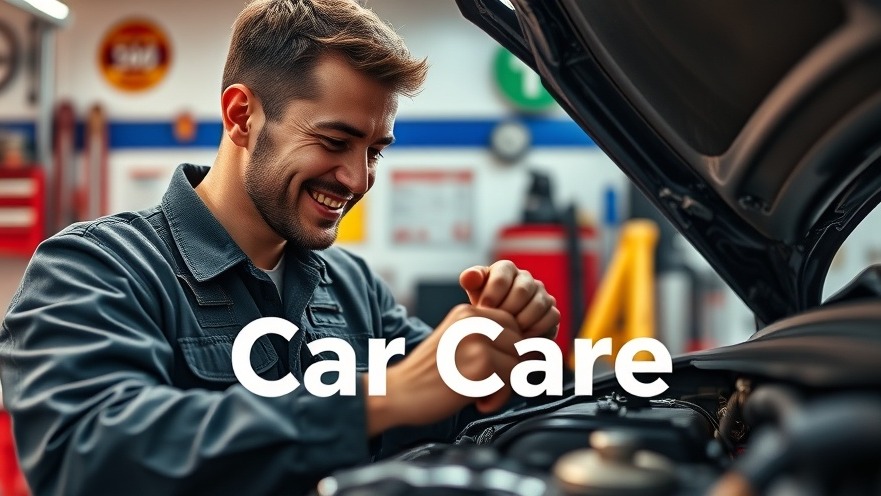
The Ultimate Guide to Car Maintenance at Home
Owning a car comes with a series of responsibilities, but did you know that many common automotive issues can be tackled right at home? According to experts, over 40% of minor car problems can be resolved without the costly intervention of a mechanic. From changing air filters to resetting maintenance lights, understanding the basics of car maintenance can save you hundreds, if not thousands, of dollars each year. This guide will walk automobile owners through essential home maintenance tasks that can keep your vehicle running smoothly.
In How To Maintain Your Car At Home (ULTIMATE GUIDE), the discussion dives into essential home maintenance practices for cars, exploring key insights that sparked deeper analysis on our end.
Essential Maintenance Checks You Can Do Yourself
As car owners, one of the most crucial responsibilities is ensuring that your engine runs smoothly. Regular checks can make a significant difference. Start by checking your engine oil. If you’re not sure how to do it, it’s quite simple. Pop open the hood and locate the dipstick. Pull it out, wipe it clean, and then insert it back into the tube. Pull it out again to check if the oil level is between the minimum and maximum marks. If it's low, top it up with the appropriate kind of motor oil. Always remember, routine oil changes can extend your engine’s life significantly.
The Importance of Air Filters
Your car needs to breathe just like you. Clean air filters are vital for optimal engine performance. The engine air filter prevents dust and debris from reaching the motor. Often found under a plastic cover in the engine compartment, replacing this filter annually can enhance your car's performance. Similarly, the cabin air filter ensures clean air inside the vehicle, trapping dust and pollutants. Regular checks help avoid unpleasant odors and ensure efficient airflow.
Take Care of Your Battery
Cleaning your battery terminals can be a straightforward yet effective maintenance task. Corrosion on battery terminals is a common issue that can affect the battery’s performance. Using a mixture of baking soda and water, along with an old toothbrush, can help you keep those terminals clean. And remember, if your vehicle won't start or shows weakness, testing your car battery with a simple multimeter can give you a clear indication if replacement is necessary.
Checking Your Lights: A Safety Must
Ensuring that all lights on your vehicle are functioning is paramount for safety. Not only do they help you see, but they also let other vehicles and pedestrians see you. A quick walk-around to inspect headlights, taillights, and brake lights can help you avoid dangerous situations. And remember to ask a friend to help with brake testing to ensure all lights are working properly.
Windshield Wipers: The Overlooked Component
Another important yet frequently neglected component is your windshield wipers. Faulty wipers can severely impair visibility during adverse weather conditions. Check your wipers regularly and replace them at least once a year, especially if you notice skipping or streaking. It's a small expense that makes a big difference in driving safety.
Brakes Matter: Don’t Skimp on Safety!
A well-functioning brake system is one of your vehicle’s most critical safety features. If you hear squealing or experience any pulsing when pressing the brake pedal, it’s time for an inspection. Inspect your brake pads and rotors regularly. If the pads are less than one-quarter inch thick, it’s time to replace them—better safe than sorry!
Fluid Levels: Keep Things Flowing
Keeping an eye on your vehicle’s various fluid levels can prevent many headaches down the line. Ensure your brake fluid, transmission fluid, coolant, and windshield washer fluid are at appropriate levels. Each fluid plays a vital role in the functionality and efficiency of the car. If you're unsure how to check, consult your owner’s manual for specifications.
Don’t Ignore Dashboard Warnings
Your dashboard is your car's way of communicating with you. Ignoring warning lights can lead to even bigger problems. Familiarizing yourself with what each warning signifies and addressing them promptly can save you time and money. A glowing check engine light can provide valuable insight into potential mechanical issues, so don’t dismiss them.
Final Thoughts: Take Charge of Your Car Care
As we've discussed, tackling basic car maintenance tasks at home can lead to substantial savings and contribute to your vehicle's longevity. By implementing these simple checks and changes, you can enhance your car's performance while also gaining a better understanding of your vehicle. So next time a light flickers on your dashboard or you hear an unsettling noise, you’ll be well-equipped to take action.
Whether you're a seasoned car owner or a newly minted driver, being proactive with maintenance is key. Start using this guide today to maintain your vehicle!
 Add Row
Add Row  Add
Add 




 Add Row
Add Row  Add
Add 

Write A Comment